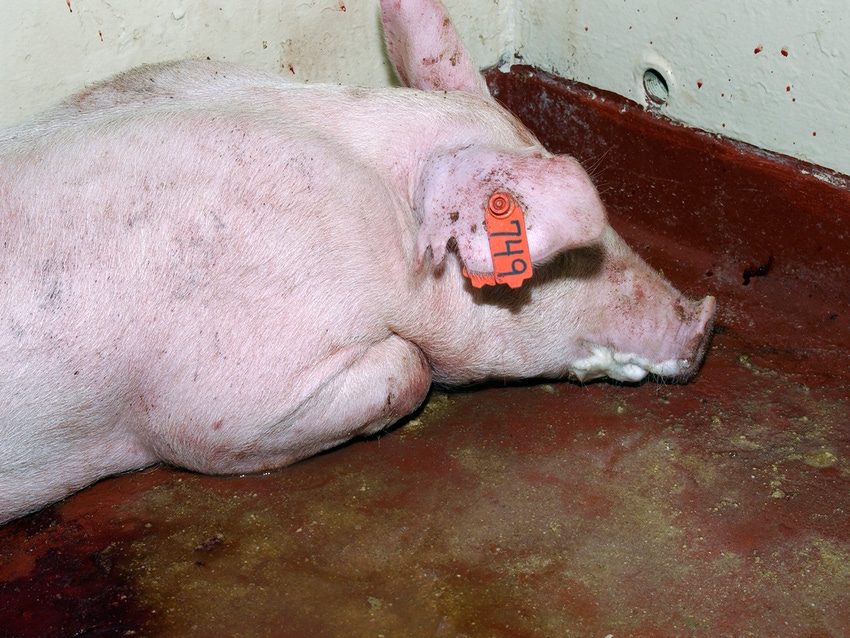Virologist was uneasy about African swine fever 25 years ago
If ASF should come to the United States, Rock says instilling consumer confidence that pork products are safe and wholesome will be crucial, rather than just pointing to science.

Twenty-five years ago, when Dan Rock was working as research leader in exotic viral diseases at Plum Island Animal Disease Center, he knew African swine fever was a disease they needed to take seriously.
“The fact was you have this large, natural reservoir of virus in Africa that you really can’t do anything about, a fully susceptible domestic pig population worldwide, no vaccine for controlling the disease and the potential — as you think of international trade, people, goods, what have you — for spread to disease-free areas and, that threat is increasing, more and more every year,” says Rock.
At the time, Rock says many thought ASF was just an African thing, and really of little concern to U.S. swine production systems. Shortly after Rock took a position at the University of Illinois in 2005, Plum Island stopped their research into the virus.
“They didn’t think it was a significant issue,” Rock says. “Of course, in 2007 when the virus was introduced in the Republic of Georgia and, spread out through the caucuses and the Russian Federation over the next five years, that was when ASF was back on the radar screen.”
Rock, who is now involved with ASF vaccine development at the University of Illinois, says he is pleased to see the USDA program reconstituted and a strong group of talented researchers focused on the virus, because if it ever made its way into the United States it would be a game changer.
“We’re lucky here because the swine industry in this country is pretty sophisticated. You know, the way the animals are raised, a concern for biosecurity and those kinds of things where we’ve even said it would never happen like that in the United States because if it was introduced, it would be rapidly controlled,” Rock says. “That may be true, and we may be fortunate because of the nature of our swine production, the way we do business here, but you just can imagine even in this country, with a point source introduction, the potential for rapid spread.”
As fast as the virus could potentially spread in the United States, misleading information surrounding the disease could spread even faster. That’s why Rock says it’s important to communicate to consumers that ASF only infects pigs, not humans or pets.
“Most viruses are actually species specific. Most human viruses only replicate in humans or infect or potentially cause disease in humans. Pig viruses only replicate or cause disease in pigs. Now there are great examples of viruses that cross, for instance, influenza virus crosses, and some other zoonotic viruses cross, but in general, most viruses are species specific,” Rock says. “The second thing is there’s not any evidence today, that ASF infects any other vertebrate species and the limited work that’s been done experimentally trying to infect smaller animal models, etc., had been unsuccessful. It’s never been linked to anything in humans.”
The problem is sometimes that science doesn’t always sink in when consumers hear about a devastating disease such as ASF.
“There’s the rational part of it and then there’s the sort of irrational part of it. People see a devastating disease in pigs — very severe, hemorrhagic disease, high mortality — and you can’t help but think, hey, that really can’t be good for me,” Rock says. “Even though we talked about that virus really only infects pigs.”
If ASF should come to the United States, Rock says instilling consumer confidence that pork products are safe and wholesome will be crucial, rather than just pointing to science. Consumers will need to feel confident that the meats they are buying are coming from a region where there is no disease or virus present.
“I hope it stays on the radar screen. We really need to think critically about how we’re going to keep the disease out if we can, how we’re going to detect it early, how we’re going to respond aggressively to deal with it should it be introduced, and how that response is going to lead to rapid recovery, which is absolutely critical for the economic aspect of it,” Rock says. “It’s an interesting time, but some of us were worried about this day 25 years ago.”
About the Author(s)
You May Also Like





